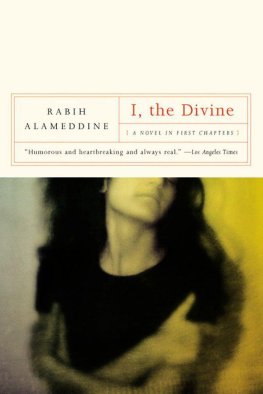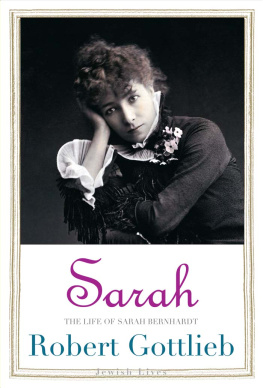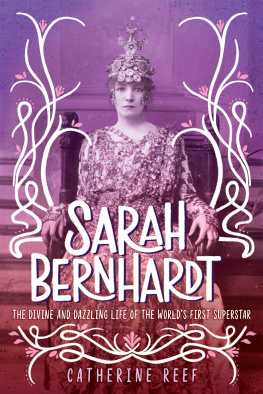Thank you for downloading this Simon & Schuster ebook.
Get a FREE ebook when you join our mailing list. Plus, get updates on new releases, deals, recommended reads, and more from Simon & Schuster. Click below to sign up and see terms and conditions.
CLICK HERE TO SIGN UP
Already a subscriber? Provide your email again so we can register this ebook and send you more of what you like to read. You will continue to receive exclusive offers in your inbox.
We hope you enjoyed reading this Simon & Schuster ebook.
Get a FREE ebook when you join our mailing list. Plus, get updates on new releases, deals, recommended reads, and more from Simon & Schuster. Click below to sign up and see terms and conditions.
CLICK HERE TO SIGN UP
Already a subscriber? Provide your email again so we can register this ebook and send you more of what you like to read. You will continue to receive exclusive offers in your inbox.
A LSO BY P ETER R ADER
Mike Wallace: A Life

Simon & Schuster
1230 Avenue of the Americas
New York, NY 10020
www.SimonandSchuster.com
Copyright 2018 by Peter Rader
All rights reserved, including the right to reproduce this book or portions thereof in any form whatsoever. For information address Simon & Schuster Subsidiary Rights Department, 1230 Avenue of the Americas, New York, NY 10020.
First Simon & Schuster hardcover edition August 2018
SIMON & SCHUSTER and colophon are registered trademarks of Simon & Schuster, Inc.
For information about special discounts for bulk purchases, please contact Simon & Schuster Special Sales at 1-866-506-1949 or .
The Simon & Schuster Speakers Bureau can bring authors to your live event. For more information or to book an event, contact the Simon & Schuster Speakers Bureau at 1-866-248-3049 or visit our website at www.simonspeakers.com.
Interior design by Paul Dippolito
Jacket design by Pete Garceau
Portrait of Sarah Bernhardt (left) by Underwood Archives/Getty Images; portrait of Eleonora Duse (Right) by Alinari Archives/Getty Images
Library of Congress Cataloging-in-Publication Data is available.
ISBN 978-1-4767-3837-6
ISBN 978-1-4767-3839-0 (ebook)
For Paola,
whose soul
helps me touch secrets .
C ONTENTS
P ROLOGUE
Csar Ritz checked his pocket watch as the lavish carriage rolled into the roundabout. It was June 14, 1894a quarter past ten in the evening. Right on schedule, thought Ritz, snapping his fingers at the footmen and adjusting his waistcoat in anticipation of the celebrity guest. She was a personal favorite of his, the Grande Dame of the theater, the greatest actress the world had ever known.
The hotelier forgave her many eccentricities, such as her penchant for traveling with a pet alligatorone that enjoyed champagne, no less. As the general manager of the Savoy, Londons premier hotel, it was Ritzs job to cater to the whims of his customers, particularly the artists. When Claude Monet insisted on room 618 with its perfect view of Waterloo Bridge, it became the subject of a dozen canvases.
Artists had their desires; the hotelier accommodated them. What happened behind closed doors remained private. Ritz instructed his staff with the maxim: See all without looking; hear all without listening; be attentive without being servile.
Earlier that week, Ritz had quietly escorted the Prince of Wales and a companion to the honeymoon suite. Five floors up, the young Oscar Wilde was smoking opium-laced Egyptian cigarettes, sipping absinthe, and carrying on in ways that would soon put him on trial for committing homosexual acts of gross indecency.
Everyone had his or her secrets, and the actress arriving that evening at the canopied roundabout of the Savoy was no exception. She flaunted her private affairs, in fact, to fuel her fame, which had been unsurpassed until now. As a footman opened the carriage door, Ritz inclined in a respectful bow to the dazzling figure that emerged, draped in jewels: the Divine Sarah Bernhardt.
The hotelier kissed her hand, taking pains not to seem obsequious but conscious that the aging actress might require a little extra attention this evening. Sarah had just returned from a performance at the Drury Lane, where shed witnessed, for the first time, the spellbinding acting of her archrival: Eleonora Duse, who was leading a quiet revolution on the stage.
To showcase her radically new style of acting, the Italian Duse had chosen a very old play: Dumass La Dame aux camlias , written in 1848 as a novel first, then adapted by the author for the theater. The play was popular around the world, quite risqu in its timea poignant melodrama about a sickly courtesan in love with a client who leaves her to die alone. It was the signature role of Sarah Bernhardt, who had made a career of playing the part in capitals across the world. Now, Eleonora Duse was taking Bernhardts play to those same capitals, forcing critics to make a choice between the old and the new. Sarah felt the affront, no doubt; how could she not? But the rivalry was not personal for Eleonoranot yet, at least. In fact, Sarah had been her idol.
A generation younger, Eleonora had risen to international stardom from a penniless family of itinerant troubadours. For the last decade, shed been disrupting the Western theater world with a singular style that was both subtle and provocative, rooted in her body, yet profoundly mystical. Like a temple priestess performing an incantation, her power lay in the silence between the wordsthe realm of thought and intentionwhere she invited the audience to meet her as cocreators. By ignoring the crowd completely, she provoked people to sit forward in their chairs and read her mind. And by disappearing into the world of the play, she became the antithesis of Sarah Bernhardt, which is perhaps why Duse has largely been forgotten.
Sarah never disappeared. No one sobbed as well as Bernhardt, no one despaired, no one died. When people paid to see the great Sarah Bernhardt, the actress gave them a show they would never forget. She relished her star power and the profound impact it had on her audiences; her roles were riveting and indelible. By the sheer enormity of her stage presence, Bernhardt had transformed the theater world, lifting acting from the disrepute into which it had fallen and raising it to its original stature as a true art.
Before Bernhardts time, popular theater had been more vaudeville than opera, a largely social experience. Opera glasses panned the crowd as much as the performance. Actors were outcasts, actresses were courtesansand when they died, they were buried, by law, in the local potters field. The rising bourgeoisie who paid to see actors on the boards wouldnt have them in their cemeteries.
It cost pennies to buy a theater ticket, a pittance, and no one got rich as an actressuntil Sarah. Her talent was such that she had earned the attention of the royals who had avoided popular theater. They had preferred Puccini to Pirandello. And why shouldnt they?
The actors craft was a highly stylized affair, delivered in shrill voices within tableau-like blocking. Actors did not pretend to portray multidimensional, flesh-and-blood human beings; they were archetypesthe Empress, the Lover, the Evil Authority Figure, the Belovedreenacting the human passion play for our entertainment.
Acting was a paint-by-numbers enterprise. There were manuals that showed you how to do ita book of poses that represented the entire gamut of emotions, from devastation to rage. If a certain line called for curiosity, for example, one need look no further than page nineteen of the Handbook of Theatrical Poses by Alamanno Morelli ( Prontuario delle pose sceniche , published in 1854 and widely read). Any literate actor could assume the curiosity posture as prescribed:
Next page













